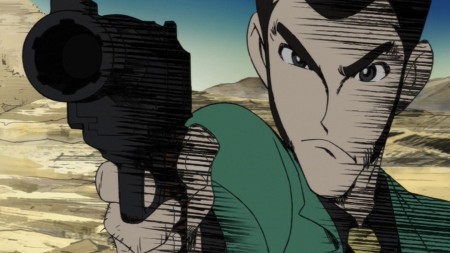Ask John: Is the Fujiko Mine Series Part of Lupin III Continuity?

Question:
As a fan of the 1970’s Lupin III (second series), I’m troubled by what I read of this new “Woman Called Fujiko Mine” series. Is it supposed to be part of the same continuity/dimension? If so, how can Lupin be a killer when the older series makes it quite clear in episodes like “Crude Reproduction, Perfect Frame” that Lupin is just a gentleman thief, not a murderer? In fact, Lupin was going to end his own life when he thought he had taken other lives. I know the solution is just not to watch the new series, but it still troubles me that it’s out there (though I have no intention of keeping others from watching it).
Answer:
Particularly as a result of Lupin III being depicted by a variety of writers and directors, his ethics have varied slightly in different franchise installments. Even in the 1996 feature film Dead or Alive that was directed by Lupin III creator Monkey Punch personally, Lupin does resort to killing his nemesis. The degree to which the 2012 Lupin III: Mine Fujiko to Iu Onna television series maintains continuity with the earlier television series is debatable. The original manga and earlier TV anime have never revealed a thorough, established origin story for Fujiko. Due to variances and revisions throughout the earlier anime, strictly aligning continuity is nearly impossible. The “Woman Called Fujiko Mine” series does make efforts to acknowledge and adhere to the continuity and events established by earlier Lupin III iterations. The 2012 television series also consciously adheres more faithfully to the tone of Monkey Punch’s original manga than the 1977 second TV series did. Lupin has indeed always been a gentleman thief, but even especially debonair agents like James Bond are not above killing. The Lupin III depicted in the 2012 television series has the charismatic confidence and charm expected of the character, but the entire 2012 television series is a literally and figuratively darker and more adult-oriented interpretation of the characters that skews closer to the Dead or Alive movie and Walther P-38 TV special than the more lighthearted second & third TV series and most of the earlier TV movies and features like Kutabare! Nostradamus and Fuuma Conspiracy.
Add a Comment
You must be logged in to post a comment.


I can’t compare The Woman Called Fujiko Mine to the original Lupin III manga because I’ve never read it, but I think its tone is pretty close to the first 7 episodes of the first TV series, when it was still helmed by Masaaki Osumi. It was only after Hayao Miyazaki and Isao Takahata replaced him as directors that Lupin became this chivalrous thief who never kills and is protective towards women, and this characterization carried over to the second TV series.
In fact, The Woman Called Fujiko Mine works pretty well as a prequel to the 1971 Lupin III TV series. Jigen and Goemon even get a convenient case of amnesia in the last episode, which explains why they act as if they don’t know each other in the fifth episode of the original series.
Whoever asked that question should really check out used copies of the FUNimation editions of the Lupin specials, and the recent releases of the green jacket show and Mamo from Discotek, the latter of which are also available free on Hulu. The reason the 70s red jacket Lupin and Cagliostro are more “family friendly” than Fujiko is because the original show bombed in Japan, and the ’77 take was basically the only way to sell any anime on mainstream Japanese tv back then. Actually, Fujiko would not get made at all then, and would even have a hard time getting greenlit, now, if it didn’t have the legacy of the franchise behind it.
Zhou: Tokyopop published some of the manga in English. [At least the first series.] But only the first manga series was profitable, while the second flopped, and now it’s all OOP. Though you can find used copies floating around if you don’t mind overpaying or waiting. I’m *hoping* someone brings it back, but they’d have to go for Tokyopop’s retro 60s pulp script to stay consistent.
Oh, yeah, Miyazaki’s stated that the “gentleman thief” take on Lupin is his interpretation of the character after he’s grown older.